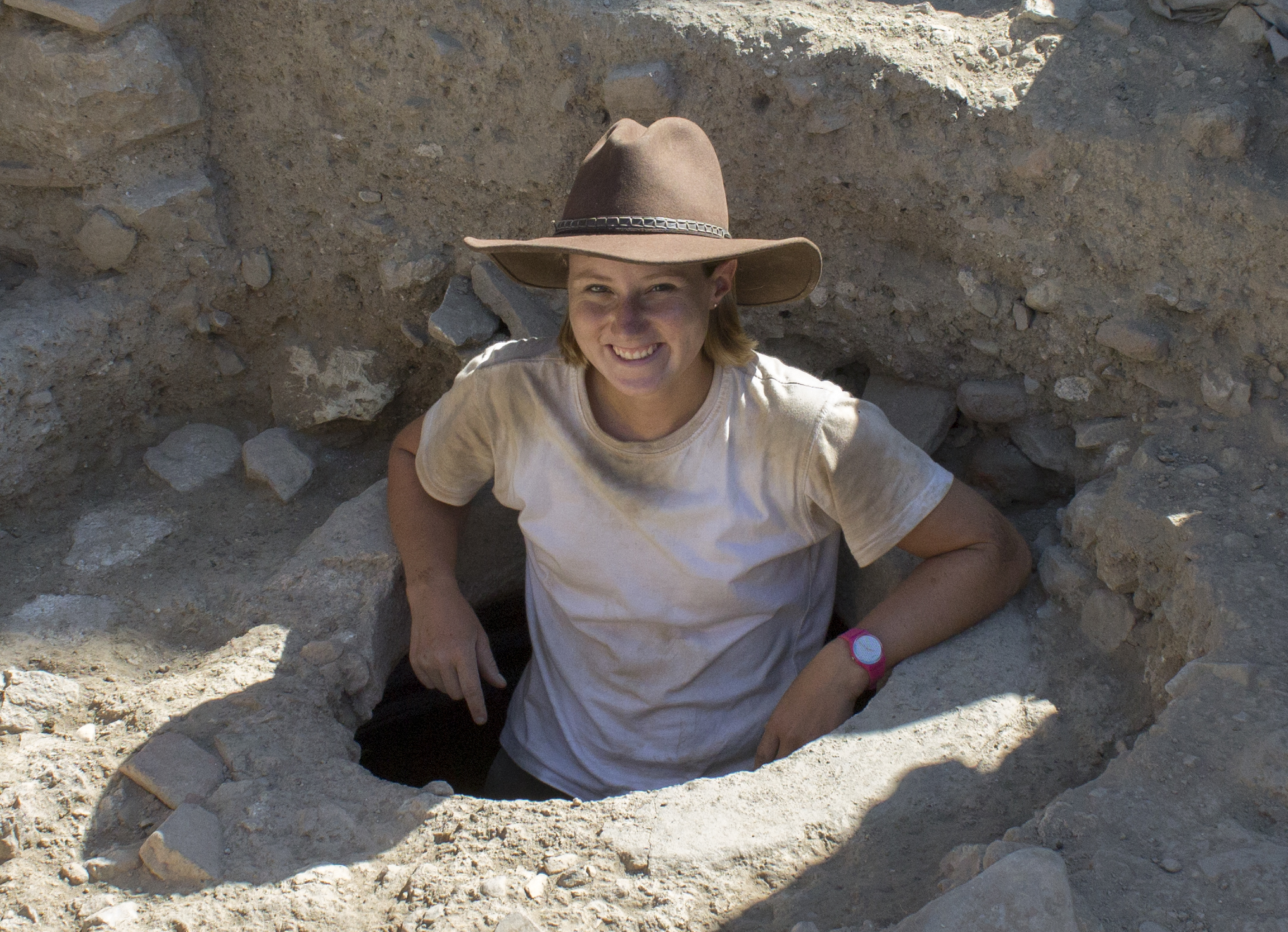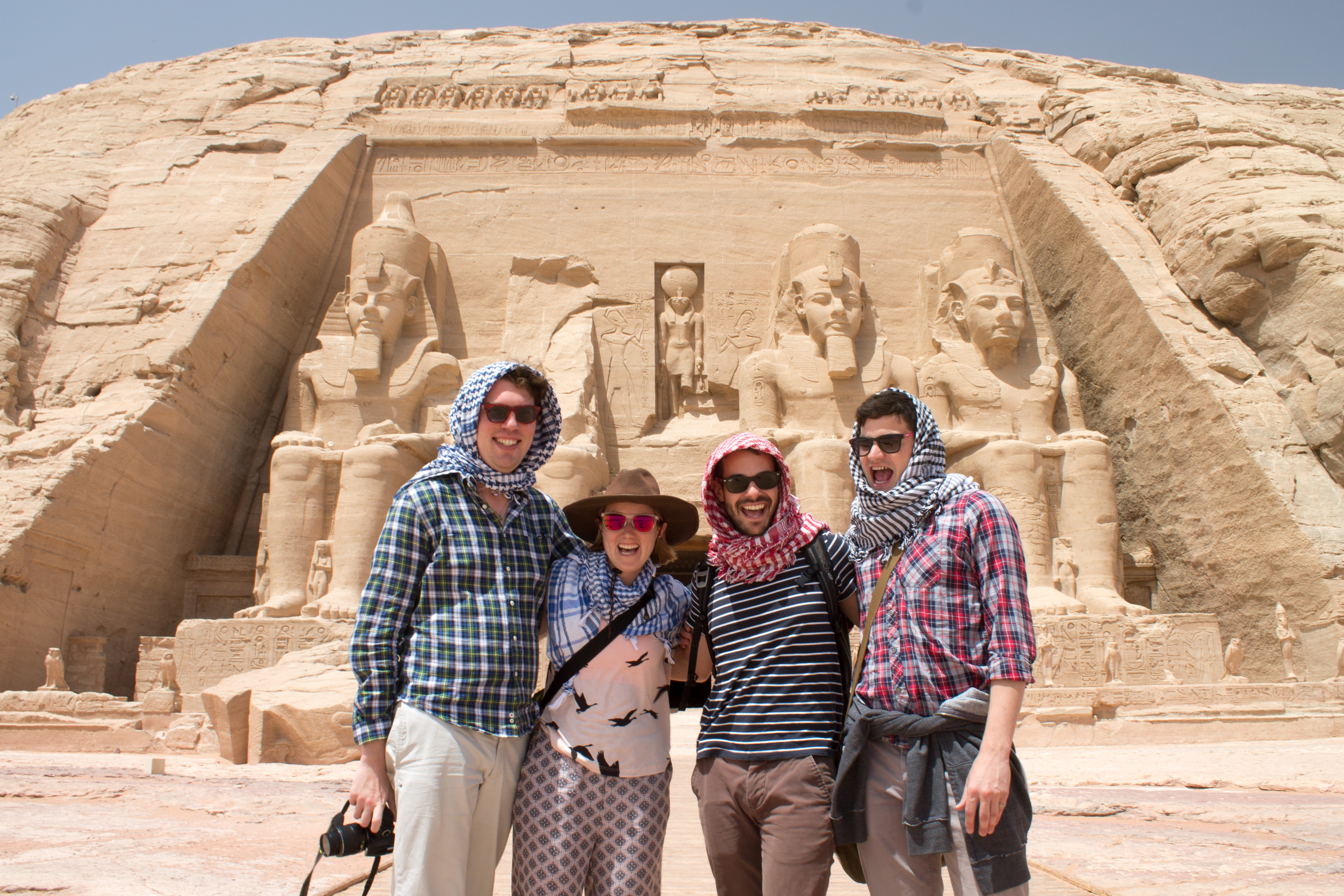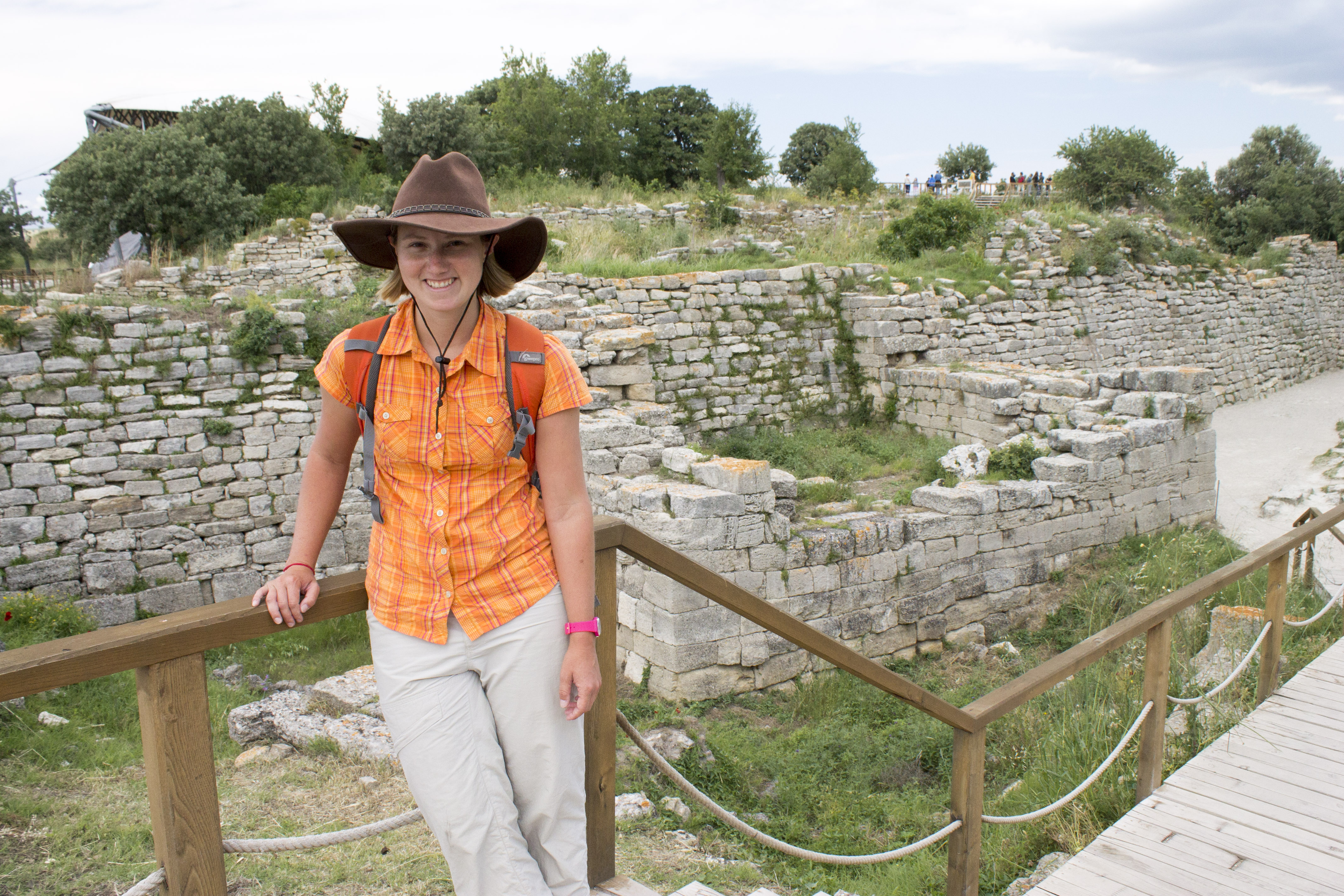
Q&A with New Publications Project Editor Sarah Rous
Sarah Rous joined the Publications Office in January 2020. As Project Editor, she works on various stages of the monograph production process. Rous was a member of the School from 2013 to 2015 and has excavated at both Corinth and the Athenian Agora as well as at sites in Italy and Turkey. Rous holds an M.A. and Ph.D. in Classical Archaeology from Harvard University and a B.S. in Classics and History from the University of Wisconsin-Madison.
After a few months on the job, Rous speaks with us about her research, interest in the intersection of archaeology and publications, and what life is like in Princeton, NJ.
Welcome back, Sarah, to the American School. Only this time, as staff! Will you please tell us a little bit about your experiences during your two years of membership at the School?
I’m so thrilled to be “rejoining” the American School as part of the Publications staff! I was a Regular Member at the School in 2013–14 and an Associate Member in 2014–15, and in the summer between those years I participated in the Athenian Agora Excavations. It’s amazing to think back on how much learning and fun I managed to pack into those two years! One of my most distinct memories is looking out the bus window at some point during the first trip of my Regular year and thinking, “wow, this is literally my job right now to ride around Greece with all of these wonderful people and learn things!!” Another of my favorite memories is that my birthday fell during the Peloponnese trip, and in the breakfast room at our hotel that morning there were balloons and party hats strewn about from a child’s birthday party the night before. I stuck a party hat on top of my “archaeologist” hat and felt extra happy all day. Of the thousands of other great memories I have, one of the best is that my mom came to visit and got to join us for the Corinthia/Argolid trip and for Thanksgiving in Athens. It was wonderful to be able to share those experiences with her and for her to get to know the School and its amazing people too.

Rous excavating a pithos in the Athenian Agora.
Such sweet memories! And definitely a wonderful experience to have your job at that moment be to travel around Greece and absorb all you can. How did your Regular and Associate years at the School influence your work?
It would be impossible to overstate how influential my time at the School has been for my work. I have often said that I learned more during my Regular year than in the rest of grad school combined, and that’s largely because of the diverse community of scholars the School brings together and fosters, whether on the trips, in seminars and lectures, or during ouzo hour. I had been more of a Romanist before I decided my dissertation would focus on Athens, so the Regular year helped Hellenize me, so to speak. I had my dissertation topic and case studies largely decided on before I came to Greece, but I hadn’t really begun to write. I found it incredibly useful to let the dissertation ideas “simmer” in the back of my brain while I took in everything I could that year. When I then returned for my Associate year I felt ready to dive headfirst into the dissertation, and I managed to write most of it that year. There is no place quite like the Blegen Library, especially when you’re working on Athens! I remember my carrel fondly, as well as several great trips that provided welcome breaks, including investigative hiking around Thermopylae and jaunts to Samothrace, Delos, and Egypt, among others.

In front of the Temple of Ramses in Abu Simbel, Egypt, with ASCSA friends (Dylan Rogers, Sebastian Anderson, Trevor Van Damme) during Rous’s Associate Year.
How did you become interested in classical archaeology?
Well, it all started with John Adams. Inspired by the musical 1776, I became rather obsessed with John Adams in junior high (before he was made cool, I have to add, by David McCullough’s biography and the HBO miniseries!). There was a story Adams liked to tell about how he had initially hated Latin because it was difficult, but then he grew to love it, and all his writings I was encountering were liberally sprinkled with Latin. I decided that if Adams thought it was hard but loved it, I too wanted to learn Latin! So, when I got to college at the University of Wisconsin-Madison, I decided to take Latin just for fun. It was indeed so fun that I eventually became a Classics major! I studied abroad in Florence my junior year, and it was then that I really was exposed to the archaeology side of Classics for the first time. As I travelled all over Italy and encountered ancient sites and museums full of interesting artifacts, I realized that pursuing classical archaeology in grad school would allow me to combine my love of the ancient languages with my budding interest in material culture all while getting to travel and getting my hands dirty.
To bring this overly long story full circle, John Adams has been with me the whole way: I eventually wrote my senior thesis at UW on Adams’ use of Latin and the Classics, with a focus on a set of excerpts and translations of the Roman comic playwright Terence that he made for his grandsons and which have never been published. I returned to this project much later, during my postdoc at Rice University, and I’m super excited that the article it eventually became will be published in Classical World later this year.
As an archaeologist, you have worked in Greece, Italy, and Turkey. Will you please tell us a little bit about these excavation projects?
My field experience has been pretty wide ranging, starting with two seasons at Troy in Turkey. These were study seasons as the excavation campaign was winding down, and I primarily worked on preparing finds catalogues in advance of the final publications of the Greek and Roman phases of the city. This was fantastic foundational experience for me since I was essentially looking through all the artifacts found in the previous decades of excavation! I next worked at Gabii in Italy, first as an excavator and then as a finds assistant. I also spent a summer learning how to study and publish pottery through the Roman Pottery Program at the American Academy in Rome. And finally I made it to Greece, where I was lucky to be able to take part in both of the School’s longstanding excavations, Corinth and the Athenian Agora. I later participated in a small pilot excavation in the Sanctuary of the Chthonic Deities at Agrigento in Sicily.
You have so much publication and editing experience! Even right after you completed your undergraduate degree at UW. What draws you to this area within the field?
I would characterize my publication/editing experience as broad though relatively shallow. In the course of my fieldwork and beyond I’ve gotten to experience many stages of the long process that lies behind any archaeological publication, from initial excavation and finds processing in the field, to the production of catalogs and digital drawings, to final editing, copyediting, and indexing. I learned a lot about the publication process when I spent a semester as a full-time research assistant to Professor William Aylward after I graduated from UW. I worked mostly on the final stages of the three-volume publication of the rescue excavations at Zeugma, and in addition to all sorts of practical skills, I also learned that I really enjoy the type of editorial work that some people find tedious or boring but that is essential to producing high-quality publications. I was able to develop my interest in this area of the field by working as a copyeditor for Harvard Studies in Classical Philology, and I’ve also gotten to experience the process from the author’s perspective with the recent publication of my book, Reset in Stone. That experience has already proven very valuable in my new role as Project Editor.

Rous outside the walls of Troy.
What are your duties as the ASCSA Publications Project Editor? Are you working on a project now or what upcoming projects will you be working on?
As a Project Editor, I work directly with authors to guide their work from the final manuscript stage all the way to printed book, coordinating with copyeditors and proofreaders along the way. The first project that I’m working on is one that is already in its final stages, the publication of the Mycenaean settlement on Tsoungiza Hill by James C. Wright and Mary K. Dabney (volume 3 of the Nemea Valley Archaeological Project series). It’s gratifying for me to get to work on this project first in my return to the School, since my predecessor and friend Colin Whiting who ably shepherded the book to this point was a fellow Regular member with me, and because Jim was the director of the School during my two years there. I have many fond memories of traipsing about Greece with Colin, Jim, and Mary!
A big congratulations on your book recently published in November 2019! Will you please tell us about your interest in memory, archaeology, and architecture? How did you bring this project to life?
Thanks! My book focuses on the reuse of marble (architectural and otherwise) in ancient Athens and the ways that different instances of reuse affected social memory within the Athenian community over time. I guess I’ve been interested in the reuse of ancient materials just about as long as I’ve been interested in ancient material culture itself! When exploring cities like Florence or Rome or wandering through Turkish villages, I couldn’t help but notice things like an ancient colonnade in a church wall or a column drum turned into a bird bath. I think what interests me about reuse at a basic level is the inherent humanity involved. Ancient artifacts or materials are never static objects, even if we sometimes study them that way—human actors were and are always involved in their creation, use, reuse, and interpretation.
In my own study of reuse I’ve developed the concept of “upcycling,” in part as an alternative to the traditional discourse on spolia, as a way to foreground the human agents and audiences involved in the choice to reuse materials. I think of upcycling as “intentionally meaningful reuse,” where some person or group makes a decision to reuse a particular object or material in a particular new context, with the goal of conveying some message or meaning through the reuse. In the cases I’ve identified, often some aspect of the “life history” of the reused object is made visible (or invisible) in the new context, in turn affecting the social memory of the community—how they conceive of their collective past and how that understanding affects their present and future. A nice example is the North Acropolis Wall, which includes reused material from the Temple of Athena Polias destroyed by the Persians in 480 BCE. As the ultimately victorious Athenians were cleaning up and refortifying the Acropolis, they used these ruined temple materials in the new wall, but not simply in a pragmatic or haphazard way. Instead the column drums are stacked up and the temple architrave is put back together within the wall, in line with where the temple had stood. The temple parts reused within the wall are thus super visible from the Agora and the rest of the city below (even today), acting as a war memorial of sorts to remind Athenians of the sacrilege of the Persians and their own strength and eventual triumph.
Where I think upcycling is especially helpful as an analytical concept is in studying instances of reuse that are further from the architectural realm, such that the language of spolia is even less applicable. In my book I use upcycling to juxtapose cases ranging from the relocation of the “itinerant” Temple of Ares into the Agora and the sheathing of the Mycenaean bastion beneath the Temple of Athena Nike to the maintenance of the ruin of the Temple of Athena Polias, the continual renovations of the Monument of the Eponymous Heroes, and the reinscription of Classical portrait statues to Roman magistrates on the Acropolis, bringing these chronologically and conceptually disparate cases together to further our understanding of how a community can craft a conception of its collective past in the material realm by building its history into its city, so to speak. Upcycling is an approach that lets us study reuse (in any period or culture) as very broadly conceived but with a firm focus on human motivations, intentions, and reactions—and it’s those human elements that make reuse such a fascinating topic to me.

Rous with her book, “Reset in Stone.”
What are you currently reading?
I’ve got a whole stack of books I’m dreaming of having time to read! I just finished Dreyer’s English, a tongue-in-cheek style guide by the copy chief of Random House that was an entertaining and appropriate pleasure read as I transitioned to my new job. Next I’m hoping to finally read some Patrick Leigh Fermor and imagine myself back in Greece. Since my husband is from Norway I’ve also been learning Norwegian over the past few years, and next on my Norwegian reading list is Naiv. Super by Erlend Loe—the book that inspired Pete Buttigieg to learn Norwegian.
How are you settling in with Princeton life? Have you discovered any restaurants, book shops, or galleries you like?
I’m loving Princeton so far! I had actually never been here before, and I didn’t quite know what to expect. But I’ve decided it’s a like a hybrid of two places that are near and dear to my heart: the smallish college town where I grew up in Wisconsin and Harvard Square. I’ve already found my favorite bookstore (Labyrinth Books), coffeeshop (Small World), bakery (Terra Momo), and running routes (Mt. Lucas Road and the D&R Canal trail), but I’m still exploring all of the impressive number of ice cream shops and local beers (both important for a Wisconsinite) before I declare favorites!